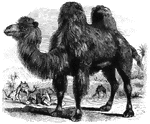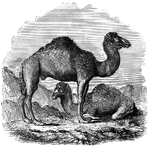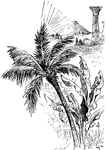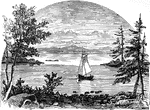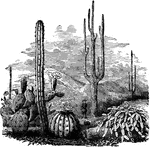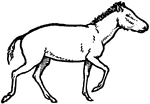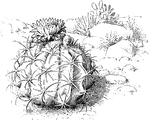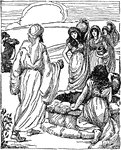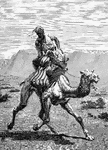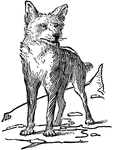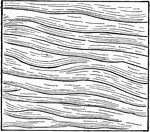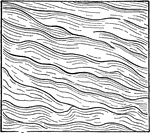
Cactus Plants
A genus of exogenous plants containing several hundred varieties, all but one species being native to…
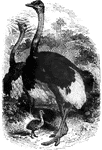
Ostriches
A large, flightless bird, the ostrich measures six to eight feet tall, and is native to the sandy desert…
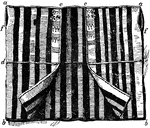
Aba
"A coarse woolen stuff, woven of goats, or camels' or other hair or wool in Syria, Arabia, and neighboring…
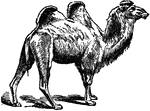
Camel
"Camel is a genus of ruminant quadrupeds, characterized by the absence of horns; a fissure in the upper…

Palmyra
"Amid the barren deserts of Arabia, a few fertile spots of soil arise out of the sandy waste, like islands…

Bedouin
A generic name for a desert-dweller, a term generally applied to Arab nomadic groups, who are found…
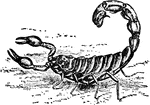
Scorpion
"Drawing from life of the desert scorpion, Buthusaustralis." — The Encyclopedia Britannica, 1910
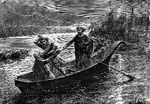
Murder of Prince Arthur
As a kind of joke, John, King Henry's youngest son, had been called Lackland, because he had nothing…
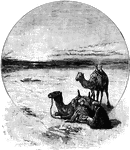
Desert of Sahara
The Sahara is the world's largest hot desert, 9,000,000 square kilometers, almost as large as the United…
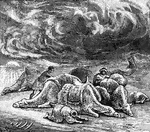
Sand Storm in the Desert
During the prevalence of the simoom, particles of fine sand are carried into the atmosphere and obscure…
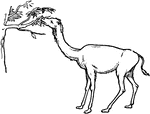
primitive giraffe-camel
A primitive giraffe-camel. This primitive camel has no humps and an elongated neck, resembling a giraffe.
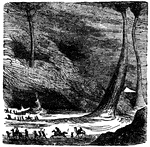
Simoon Storm
Strong dust storms that move in a circular motion. They mostly occur in deserts such as deserts found…

Mesquit (prosopis juliflora).
The mesquit is on of the characteristic shrubs throughout the desert. It varies in size from a straggling…

Spanish bayonet (yucca baccata).
Two or three species of yucca are called Spanish bayonet. The shrub has a thick stalk about 3 or 4 feet…

Creosote bush (larrea mexicana)
The creosote is a sticky, resinous bush with small round evergreen leaves, yellow flowers, woolly fruit,…

Acacia bush (acacia constricta).
The acacia have small leaves and very small yellow flowers in dense spherical or cylindrical heads.…
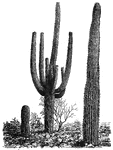
Giant Cactus (cereus giganteus).
The giant cactus is by far the largest form of vegetation in the desert. They can grow to be over 20…

Palo verde (parkinsonia torreyana).
The palo verde is a very peculiar naked evergreen tree. It has small freen leaves in the rainy season,…
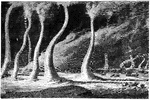
Sand-Storm in the Desert
A dust storm or sandstorm is a meteorological phenomenon common in arid and semi-arid regions and arises…

Saguaro
It is native to the Sonoran Desert in Arizona, the Mexican states of Sonora and Baja California, and…
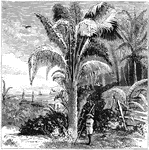
Date Palms
The Date Palm (Phoenix dactylifera) is a palm in the genus Phoenix, extensively cultivated for its edible…

Woodpecker
The woodpeckers, piculets and wrynecks are a family, Picidae, of near-passerine birds . Members of this…

Cobra Head
Cobras are venomous snakes of the familys Elapidae, of several genera, but particularly Naja. (Non-cobra…

Date Palm Leaf
An illustration of a portion of a date palm leaf. The Date Palm (Phoenix dactylifera) is a palm in the…

Woad
Woad (or glastum) is the common name of the flowering plant Isatis tinctoria in the family Brassicaceae.…

Resurrection Plant
The fertile plant of the Resurrection Plant (Selaginella lepidophylla), a spikemoss which lives in deserts.

Yardangs
Map of a desert area with yardangs, and cross sections of the same on a much larger scale. Yardangs…
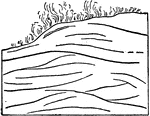
Dune with Eolian Cross-bedding
Cross-section of a dune near Ostend, Belgium showing Eolian cross-bedding.

Dune with Eolian Cross-bedding
Cross-section of a dune near Ostend, Belgium showing Eolian cross-bedding.

Pallas's Sand Grouse
"Syrrhaptes paradoxus, Sand-Ground, are true desert birds, affording excellent instances of protective…
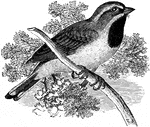
Black-throated Sparrow
"Amphispiza bilineata. Black-throated Sparrow. Black-faced Sage Sparrow. face, chin, and throat sharply…

Date Palm of the Lower Euphrates
Also known as Phoenix Dactylifera. The date palm tree is one of the oldest fruit trees in the world.…

The Great Sphinx
"This colossal figure, human-headed and lion-bodied, is hewn from the natural rock. The body is about…

Branch of Desert Fan Palm
Also known as Washingtonia filifera. A palm tree native to the desert oases of the southwest United…

Branch of Spanish Bayonet
Also known as Yucca schidigera. A flowering plant that is native to the Mojave Desert in the Western…

Branch of Yucca Mohavensis
The branch and fruit of a Yucca mohavensis, a species of plant from the agave family.

Ariocarpus Lloyd
The Ariocarpus lloydii plant has a rounded top that is four inches or more in diameter. The flowers…
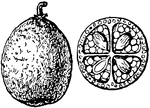
Eremocitrus Glauca Fruit
Illustrated is the fruit of eremocitrus glauca. It is known as Australian desert kumquat. The fruit…
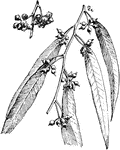
Eucalyptus Rostrata
The common name of eucalyptus rostrata is red gum. The tree blooms from April to July. The tree is able…

Feeding of the Four Thousand
"And Jesus called unto him his disciples, and said, I have compassion on the multitude, because they…


